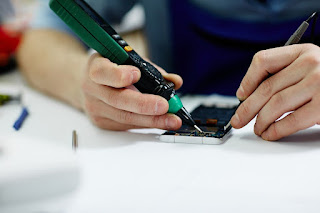What is a Repair Cafe, and How Does it Build a Sustainable Community?
In today’s fast-paced world, we’re quick to throw things away when they break, but what if we could fix them instead? That’s where the concept of a Repair Cafe comes in. It’s not just a place; it’s a movement that’s changing the way we think about waste, community, and sustainability.
What is a Repair Cafe?
A Repair Cafe is a community-driven event where people come together to repair broken items, share knowledge, and reduce waste. These cafes are typically held in local community centers, libraries, or other public spaces. Volunteers with skills in repairing things like electronics, clothing, furniture, and bicycles offer their expertise to help others fix their broken belongings.
The concept is simple: rather than discarding a broken item and buying a new one, you bring it to a Repair Cafe, where volunteers help you figure out what’s wrong and work with you to repair it. The best part? It’s usually free, with a small donation sometimes suggested to keep the cafe running.
Why are Repair Cafes Important?
Repair Cafes play a crucial role in reducing waste and promoting sustainability. In many cases, a broken item can be easily fixed, but without the knowledge or tools, most people simply throw it away. This contributes to the growing problem of waste in our landfills and the depletion of natural resources needed to produce new goods.
By repairing instead of replacing, Repair Cafes help extend the life of products, reduce the demand for new resources, and cut down on waste. But the benefits don’t stop there—Repair Cafes also build community, fostering a sense of cooperation and shared purpose among neighbors.
Real-Life Examples of Repair Cafes in Action
Take, for example, the Repair Cafe in Amsterdam, where the movement began in 2009. This cafe has helped repair thousands of items, from toasters to trousers, saving them from the landfill and saving their owners money. Similarly, in the United States, Repair Cafes have popped up in cities like New York and San Francisco, where communities gather to fix everything from electronics to furniture.
Another example is the Repair Cafe in Melbourne, Australia, which has become a hub for sustainability-minded individuals. Here, people of all ages come together not just to repair items but to learn new skills and connect with others who share their passion for the environment.
How Repair Cafes Fit into Our Self-Sustainable City Projecta
In our self-sustainable city project, the concept of a Repair Cafe plays a vital role in promoting a culture of sustainability and community. By integrating Repair Cafes into our city, we encourage residents to think twice before discarding items, fostering a mindset of resourcefulness and conservation.
Repair Cafes in our city would not only reduce waste but also provide a platform for residents to share skills, connect with neighbors, and strengthen community ties. It’s a practical way to live more sustainably, making the most of what we already have and minimizing our impact on the environment.
Join the Conversation
What do you think about Repair Cafes? Have you ever been to one, or would you like to see one in your community? Share your thoughts or questions in the comments below! We’d love to hear how you feel about this innovative way to build a more sustainable world.
![Self-Sustainable City - Ramakrishna Surathu [Official Website]](https://blogger.googleusercontent.com/img/a/AVvXsEivh2bAyNCG-DxYf4p_lHLcFQx1i8MvbBv91UgzKqAFrNMhT8xW-fwxgNJTdtojgb9aYXiG9EdNYLo8tNmtaakyq-zmnaCeeUGMdpvJ8iOaVzd2tSKEC2UrUXzFJa952LPF-OngfPenpbFOj7b8AcbYtPGSng6xbGr-_NwEIRpXZg_QdKLGRMGeg5pWmtaQ=s1280)

No comments:
Post a Comment